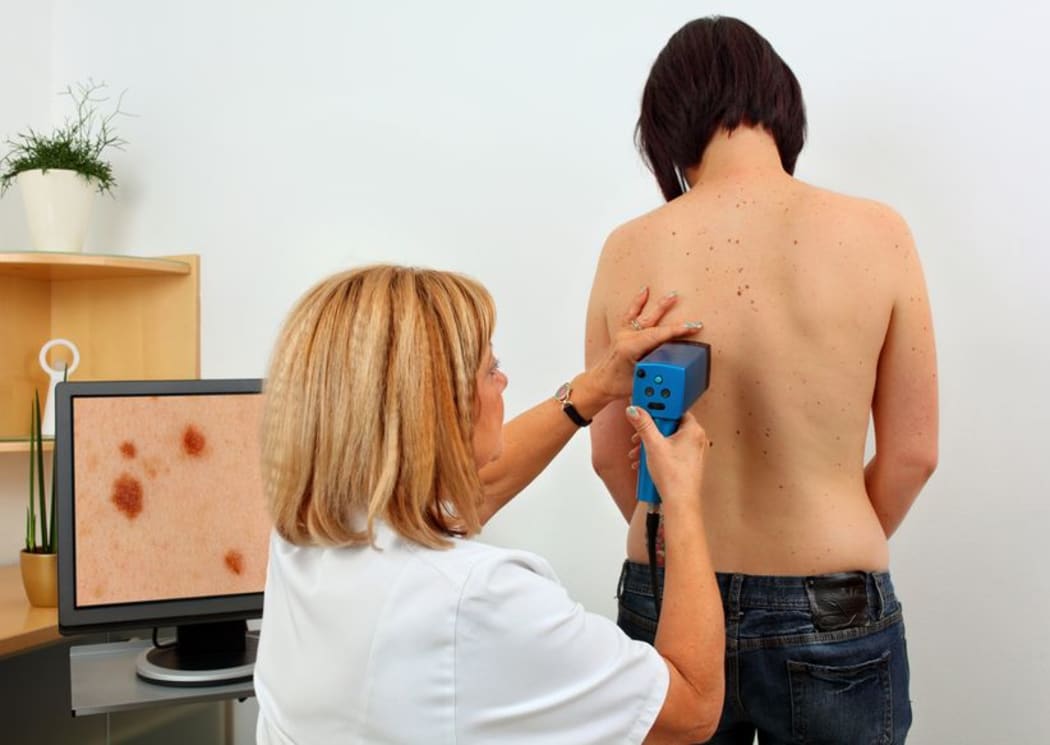South Islanders may be more susceptible to deadly melanomas because they have a different gene mutation to people living in the North Island, new research shows.

South Islanders' melanomas are significantly more likely than those of North Islanders to carry a gene mutation, the study found. Photo: 123RF
Scientists from medical schools studied 529 melanoma patients from around the country and found significant differences in DNA.
The research showed South Islanders could be more receptive to future treatments, but were also at more risk of having nodular melanoma, a more invasive form of skin cancer.
There was nothing to definitively to prove why North and South Islanders were different, but Otago University professor Michael Eccles said he suspected it was because of their exposure to light.
"They don't have a different gene makeup but a different response to the environment and that response is causing the mutation," said Prof Eccles. "I think it's to do with the type of UV light."
The research, which appears in the international journal Oncotarget, showed sunburn or strong exposure to UV-radiation - especially during the spring months in the South Island when vitamin D levels were lowest - could be a factor leading to high rates of gene mutation.
The most common mutation was to an oncogene called BRAF, with one-third of the melanomas in the study showing changes to this gene, which may be targeted by the drug Zelboraf.
"We found similar BRAF mutation rates in both the North and South Island, but when it came to another particular gene, some stark differences emerged."
Mutations to a gene known as NRAS were found in 38 per cent of South Island melanomas, but only in 21 per cent of North Island ones.
Prof Eccles said there were similarly low numbers of Māori or Asian patients in both the North and South Island groups studied, so that did not explain the high rate of mutations in the south.
Immunotherapy drugs
In New Zealand, the proportion of patients with the BRAF mutuation is smaller than in the rest of the world, but the occurrence of the NRAS mutation is substantially higher.
A preliminary 2015 US study found that in a small number of patients, melanomas with NRAS mutations had higher response rates to immunotherapy treatments such as the drugs Keytruda and Opdivo, Prof Eccles said.
"Our findings suggest that South Island melanoma patients could potentially benefit more often from the use of such therapies, should the US findings be confirmed by further research," said Prof Eccles.
Aniruddha Chatterjee, Research Fellow at the Dunedin School of Medicine, said there was no treatment that specifically targetted the NRAS gene, but immune therapy had promise.
"There's very early evidence, just came out last year, suggesting that patients who have the NRAS mutation, they tend to peform better if you give them immune therapy." he told This Way Up.
"So perhaps the melanoma patients with the NRAS mutuation in New Zealand could benefit from cancer immune therapy - more so than perhaps other countries where the BRAF mutation is the major one."
He said the next aim was to find out the influence of genetics on the metastatis process.
"Our next research, which is ongoing at the moment, a big aim is to identify epigenetic drivers of cancer - and melanoma to start with.
"And if we know that, then we can perhaps design therapies ... and perhaps predict the propensity of a primary cancer to metastasise."





